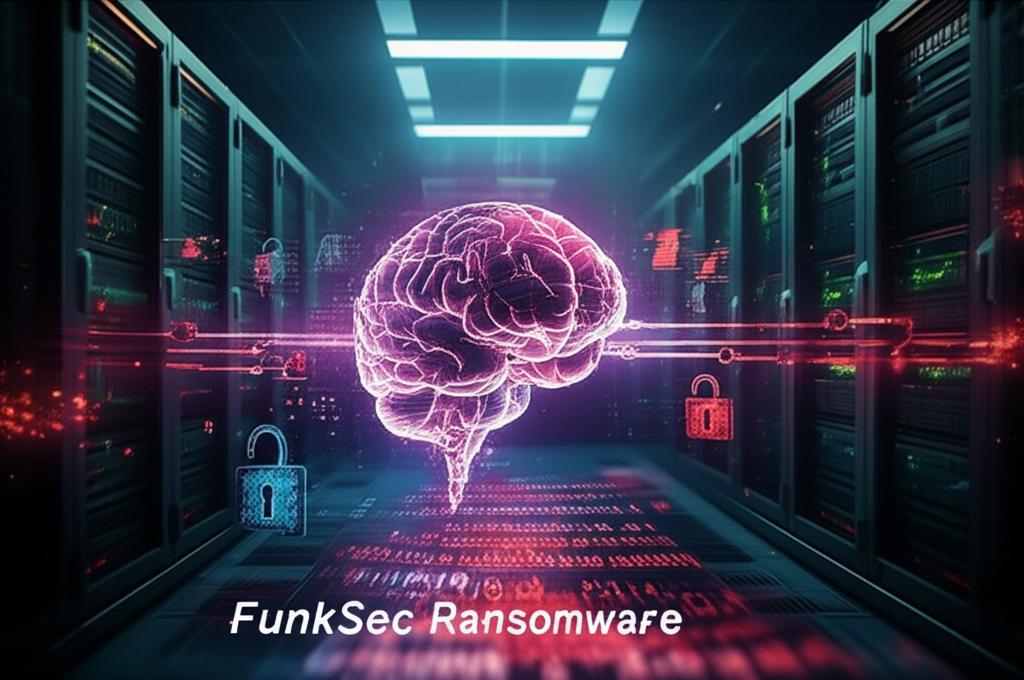Unmasking FunkSec: The Evolving Threat of AI-Powered Ransomware
In the rapidly evolving landscape of cybercrime, a new and particularly insidious entity has emerged: FunkSec Ransomware. This isn’t just another group of opportunistic hackers; FunkSec distinguishes itself by harnessing the power of Artificial Intelligence to orchestrate more sophisticated, evasive, and devastating ransomware attacks. The integration of AI transforms traditional ransomware tactics into a dynamic, adaptive, and highly effective threat, marking a critical shift in the cybersecurity arms race.
What Makes FunkSec’s AI So Potent?
FunkSec’s leverage of AI introduces a layer of intelligence and automation previously unseen in mainstream ransomware operations. This technological edge allows them to bypass traditional defenses with alarming efficiency.
- Sophisticated Target Identification: AI algorithms enable FunkSec to analyze vast amounts of open-source intelligence (OSINT) and network data to pinpoint the most vulnerable and valuable targets, maximizing their potential for significant payouts.
- Evasive Techniques: Machine learning helps Funkware’s malware adapt and evolve its attack vectors in real-time, making it harder for signature-based antivirus solutions to detect and quarantine. It can learn from failed attempts and modify its approach.
- Automated Negotiation: Advanced AI chatbots can handle initial ransom negotiations, dynamically adjusting demands based on victim profiles and perceived willingness to pay, reducing human error and increasing efficiency for the attackers.
- Adaptive Malware Deployment: AI can intelligently map network topologies, identify critical systems, and determine optimal propagation paths, ensuring maximum disruption and data encryption across an organization’s infrastructure.
The Devastating Impact on Victims
The consequences of a FunkSec Ransomware attack are far-reaching and potentially catastrophic. Beyond the immediate financial demand, victims face significant operational paralysis, data loss, and long-term reputational damage.
- Data Encryption and Exfiltration: FunkSec not only encrypts critical data but often exfiltrates it, adding the threat of public release or sale if the ransom isn’t paid (double extortion).
- Business Interruption: Encrypted systems can bring an entire organization to a standstill, leading to massive productivity losses, missed deadlines, and inability to serve customers.
- Financial Demands: Ransoms demanded by AI-optimized groups can be meticulously calculated to inflict maximum financial pain while remaining just within a victim’s perceived ability to pay.
- Brand Erosion and Trust Issues: A public data breach or prolonged operational disruption severely damages a company’s reputation, eroding customer trust and potentially leading to regulatory fines.
Fortifying Your Defenses Against AI-Powered Ransomware
Combating a sophisticated threat like FunkSec requires a multi-layered, proactive defense strategy that also incorporates AI-driven security solutions.
- Advanced Endpoint Protection: Deploy next-generation antivirus (NGAV) and Endpoint Detection and Response (EDR) solutions that utilize AI and machine learning to detect anomalous behavior, not just known signatures.
- Regular Data Backups: Implement a robust backup strategy, following the 3-2-1 rule (three copies of data, on two different media, with one copy offsite or in the cloud, air-gapped from the network).
- Employee Training: Phishing and social engineering remain primary initial access vectors. Regular, comprehensive training helps employees recognize and report suspicious activity.
- Network Segmentation: Isolate critical systems and sensitive data within your network to contain the potential spread of ransomware, limiting the damage an attacker can inflict.
- Threat Intelligence Integration: Subscribe to and actively use threat intelligence feeds, particularly those focused on AI-driven cyber threats, to stay ahead of emerging tactics.
- Robust Incident Response Plan: Develop, test, and regularly update an incident response plan to ensure a swift and effective reaction in the event of a breach, minimizing downtime and data loss.
The Future of Cyber Warfare: AI vs. AI
The emergence of groups like FunkSec underscores an accelerating trend: the weaponization of AI in cybercrime. This necessitates an equally advanced response, driving innovation in defensive AI technologies. The future of cybersecurity will increasingly become a dynamic battle between offensive and defensive AI, where the most adaptive and intelligent systems prevail.
As FunkSec Ransomware illustrates, the threat landscape is not merely evolving; it’s undergoing a fundamental transformation. Vigilance, continuous investment in advanced security technologies, and a commitment to proactive defense are no longer optional but essential for survival in the age of AI-powered cyber threats.







